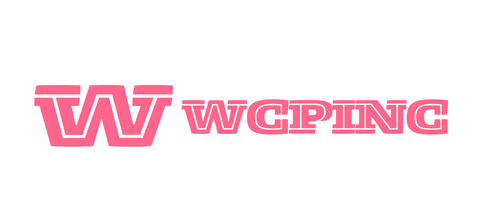How Can You Design an Interactive Playroom for Children with Various Learning Toys?

Designing an interactive playroom for your children is a fantastic way to foster their creativity, development, and learning skills. By integrating various toys into the space, you create a stimulating environment that encourages play, exploration, and learning. This article will guide you on how to design a functional and engaging playroom using a variety of toys geared for learning and development.
The Importance of a Well-Designed Playroom
A well-designed playroom is more than just a space to store toys. It’s a sanctuary for your children, a place where they can explore, learn, and grow. This dedicated area can be a place where your kids learn to keep their belongings organized, improve their cognitive and motor skills, and develop a love for learning.
Also to read : How to Design a Child’s Bedroom with an Educational Montessori Theme?
When designing a playroom, it is essential to create a space that is comfortable, safe, and stimulating. The layout should be practical and intuitive, with clearly defined areas for different types of activities. This will help your children understand how the space is organized and where to find their toys.
Think of the playroom as a mini school or learning center, equipped with a variety of learning toys. These toys can range from building blocks and puzzles to electronic learning games and books, all aimed at enhancing your child’s cognitive and physical abilities.
In the same genre : What Are the Most Effective Ways to Incorporate Heat Recovery Ventilation in a Renovated Attic?
Selecting the Right Furniture for the Playroom
The furniture you choose for your playroom should be kid-friendly and durable. It should also be functional and able to withstand rough play and spills. Opt for furniture with rounded corners and edges to eliminate the risk of injuries.
Storage is a key component of any playroom. Consider using multi-function furniture items that double up as storage solutions. For example, you could use a bench with storage underneath, or a bookshelf with bins or baskets.
Remember to select furniture that is the right size for your children. They should be able to easily access their toys and other items. Also, consider the future. As your children grow, they will need different types of furniture. Investing in adjustable furniture can save you from having to replace items too often.
Incorporating Learning Toys into the Playroom Design
Incorporating learning toys into your playroom design is a great way to stimulate your child’s mind and keep them engaged. These toys can be divided into different categories based on the skills they help to develop. For example, puzzles and building blocks help enhance problem-solving skills, while musical instruments can foster creativity and improve coordination.
Consider the age of your children when choosing learning toys. Younger kids might enjoy colorful stacking blocks, while older kids might prefer more complex games or puzzles. It’s also a good idea to rotate toys regularly to keep your child interested and challenged.
Make sure that the toys are easily accessible. Use open shelves or baskets to store toys so that your children can easily see and reach them.
Creating Zones for Different Activities
Creating different zones in your playroom can help organize the space and make it more functional. Each zone should be dedicated to a specific type of play or activity. This way, your children will know exactly where to go for their favorite activities.
You could have a zone for building and construction, another for arts and crafts, and another for reading and relaxation. These zones can be defined using furniture, rugs, or even wall color.
When creating these zones, consider the type of activities your children enjoy. If they love to draw and paint, create a craft area with a table, chairs, and storage for art supplies. If they enjoy reading, create a cozy reading nook with a comfortable chair and bookshelves.
Involve Your Child in the Design Process
When designing a playroom, it’s important to involve your child in the process. After all, the playroom is meant for them. Ask them what they would like to have in their playroom. Perhaps they want a specific theme or specific toys.
Involving your child in the design process can make them feel valued and excited about their new playroom. Furthermore, it can also give them a sense of ownership over the space, which can motivate them to keep it tidy and organized.
In conclusion, designing a playroom is more than just creating a space for play. It’s about creating a space that promotes learning, skill development, and creativity. With the right design and selection of learning toys, your playroom can become a fun and educational haven for your children.
The Role of Age Appropriate Toys in Playroom Design
Selecting age appropriate toys for the playroom design is crucial in ensuring your child’s development and safety. Different toys cater to different age groups, each designed to help kids develop specific skills. For instance, for a toddler playroom, you might incorporate toys that help in fine motor skills development, such as stacking rings or peg puzzles.
Board games and problem-solving toys would be more suitable for older children as they aid in developing critical thinking skills. However, it’s not just about the educational benefits. Ensure the toys you choose are also fun and appealing to your child. This way, learning becomes an exciting and enjoyable process.
Another important aspect to consider is the organization of these toys. Effective storage solutions such as labeled baskets, shelves and bins can help keep the playroom tidy. This not only makes the play space more appealing but also enhances the child’s learning experience. It teaches them to take responsibility and assists them in identifying and categorizing objects.
Remember, the play area should be a flexible space. As your child grows, their interests will change, and so should their playroom. You can easily achieve this by choosing adjustable furniture and versatile storage units.
Finalizing the Playroom: Adding Finishing Touches
Once you have the basics of your playroom in place, it’s time to add the finishing touches. These elements can really bring the playroom to life and make it a space your child loves.
Wall decals are a great way to enhance the visual appeal of the space. They come in a variety of designs and can be easily changed as per your child’s preference. If your child loves to paint or draw, consider setting up an art corner with a small easel and a storage unit for art supplies.
Natural light is crucial in any play space. Ensure the playroom has enough windows to let in ample sunlight. This not only makes the room cheerful but also aids in the child’s health and well-being.
Another important aspect is space for active play. Consider adding some soft mats or a small indoor slide to encourage physical activity. This can be particularly useful during inclement weather when outdoor play isn’t an option.
Remember, the goal is to create a playroom that fuels your child’s imagination and encourages them to explore and learn.
Conclusion
Designing an interactive playroom is a rewarding process that not only provides a dedicated space for your child to play, learn and grow but also aids in his/her holistic development. By considering their preferences and the skills they are currently developing, you can choose age appropriate toys and design a playroom that caters to their needs.
Always remember that the playroom should be a constantly evolving space that changes and grows with your child. By involving them in the design process, you not only make them feel valued but also teach them important skills such as decision-making and organization.
So, whether it’s creating a cozy reading nook or a vibrant art corner, effective playroom design can transform any space into a world of imaginative play for your child.
